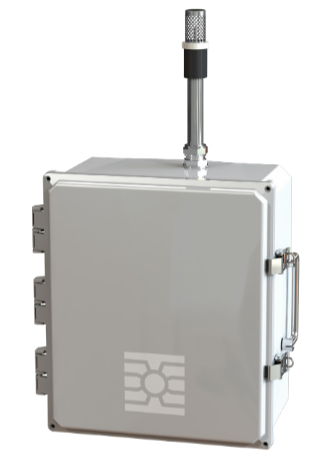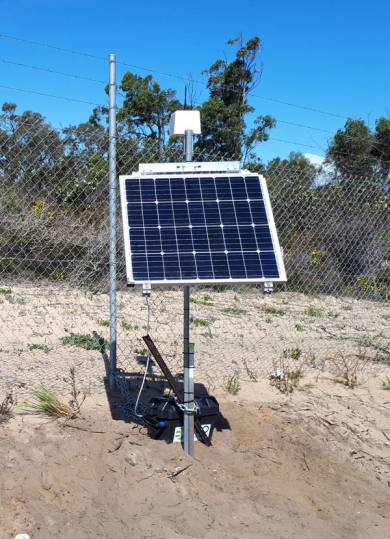Dust Monitor
DIGITAL DUST MONITOR FOR CONTINOUS OUTDOOR MONITORING OF PARTICLES IN AIR

INFRA X20DM2 Dust monitor
The INFRA system is used to monitor construction, activities, rock blasting, train traffic, road traffic, Vibration in buildings etc.
During excavation, crushing and demolition activities resulting in dust particles, can be detrimental to human health.
Similarly, during the work operation of trains, subways, buses, trucks and other heavy vehicles can also lead to significant dust generation.
The best solution for regulating these harmful dust particles can be achieved by implementing The INFRA X20DM2 Dust Monitor. It has the essential features like a sensor for continuous monitoring of such harmful particulates in the air. It can be conveniently connected to Sigicoms INFRA-measuring system. The mechanism comes with ready-made solutions for data communications, database on the internet and web presentation of measurement data.
- • Measuring range:
- – PM10 and TSP: 0.1–6000 µg/m³
- – PM2.5 and PM1.0: 0.01–600 µg/m³
- • It not only measures but can also adjust itself for temperature- and humidity- variations.
The measurement relies on a highly established and proven technology ensuring safety and reliability. It comes with an in-built pump that is capable of drawing in air to a calibrated laser based refraction detector.
It offers a digital output and the readings can be directly transmitted to an interconnected INFRA Mini/Master/Micro. Therefore, it helps in continuous measurement and identifies the level of particulate concentration instantly.
The system also has additional features like triggering an alarm light, sending SMS and e-mails when the particle levels breach the preset levels.
- • Simultaneous measurement of the concentration of particles PM1.0, PM2.5, PM10 and TSP.
- • Boasts of an impressive measuring range PM10 & TSP: 0.1-6000 µg/m³ PM2.5 & PM1.0: 0.01-600 µg/m³.
- • Provision for setting the alarm level on PM10 concentration: 5-5000 µg/m³.
- • The tool is MCERT certified.
Technical Data
* Particle Size
Measures simultaneously PM1.0, PM2.5, PM10 and TSP
(total suspended particles)
* Resolution
– 0.1 för PM10 och TSP (channel 1 resp 4)
– 0.01 för PM2.5 och PM1 (channel 2 resp 3)
* Internal Time
1–60 minutes
* Accuracy
+-5% of reading traceble to SAE Fine test dust
* Flow rate rang
600 ml /min
* Internal battery Run Time
10 hours when heating is disabled
* External Power
100–240V AC 50-60 Hz power supply
Heating 12W
* Dimensions
370 x 320 x 180 mm (HxWxD)
(14 x 12 x 6 in)
* Operating Environment
-5 °C to +40 °C (23 to 104 °F), 10-95 RH, noncondensing
* Maintenance
– Flow and filter check.
– Minor maintenance needed every 3rd month
* Weight
10 kg (22 lbs)
OPCUBE: Air Quality Monitor
 Overview:
Overview:
OPCube offers the most unmatched and out-of-the-box solution for urban dust and air quality monitoring.
OPCube successfully manages the challenges of capturing accurate data in variable climate conditions and can also satisfy the purpose of monitoring fine-grained air quality monitoring networks.
The solution for a precise dust particulate monitor is finally here, it can suitably monitor roadsides and boundaries, land development sites, demolition sites, and is the best solution for environmental health and local authority investigations.
This easy-to-install and set gas particulate monitor is more than capable for various needs where dust monitoring is mandatory.
Highlights
- • Ultra-low noise detection for gases (ppb) and particulates (μg/m³).
- • Compatible with multiple analysis methods, offering flexible sampling rates and real-time data access.
- • High-density air quality network built with low-cost, individually calibrated sensors.
- • Open-source firmware enabling extensive customization of sensing, data transmission, and analysis.
- • Reliable performance across a wide climate range (T/rH), with durable casing designed for harsh environments.
General Specifications
| Size | 154mm x 154mm x 130mm. |
| Weight | 2kgs |
| Operating Temperatures | Rated from -40 to +50 C Includes Sensirion temperature and relative humidity sensor |
| Power | Wide DC Power input from 7 to 24 Volts Solar power set-ups available |
| Internal Battery | Lithium iron phosphate (LiFePO4) rechargeable backup battery (>1 Hour operation). |
Sensing
| Alphasense optical particle counter (OPC-N3): | PM1, PM2.5 and PM10 Plus approximated readings up to 40 microns. |
| Ultra-low noise circuitry | Maximizes repeatability of electrochemical sensing. |
| High frequency sampling: | Variable sampling rates with a frequency up to 30 samples a minute. |
| Optional Single Parameter Gas Sensor: | One Alphasense electrochemical sensor OR PID for VOCs OR NDIR for CO2. Available sensors: CO, H2S, NO, NO2, O3, SO2, VOCs OR CO2. |
| Data Correction | Refined through co-location with government reference equipment. |
Platform
- • Operates on the Debian Linux OS, ensuring robust performance and seamless integration with other sensor systems.
- • Powered by the SAMA5D27 CPU for efficient processing.
- • Equipped with a real-time clock and battery backup, supporting time synchronization via GPS receiver, network time protocol, or the internal real-time clock, depending on availability.
Communication & Location
- • 4Gmobile communications for real-time data delivery to the cloud.
- • GPS / GLONASS receiver
Data Infrastructure
- • Sensedata messaging, control messaging and data storage using Amazon Web Services(AWS) or customer’s own infrastructure.
- • Local micro SD data storage
- • Eagle.IO software

Health Risks of Dust
- • All the dust variants that humans inhale can be potentially harmful. The condition can become worse for people who are already dealing with respiratory conditions like asthma and allergies.
- • The common respirable particles that can make us vulnerable to various diseases include dust, engine exhaust, tobacco smoke, and mists.
Particle Size and Health Impact
- • Depending on the source and the extent of the pollution dust particles can range from 0.001 to 0.1 mm in size. When the size of the aforesaid dust particles are less than 0.005m, it makes us most vulnerable to various health complications.
- • Usually, dust particles, that are so small are not visible, yet it has the potential to inflict various complications that include compromised vision, irritation in the eye, ear, nose, throat and skin, and lastly, irreparable damage to lung tissues.
Types of Harmful Dust
Here are the names of some of the common yet most harmful types of dust:
- • Silica: Inhaling silica can lead to various health problems. The prominent ones are silicosis, lung cancer, TB, kidney damage, and COPD.
- • Asbestos: Inhaling asbestos can lead to a potentially life-threatening disease known as mesothelioma. Furthermore, it also increases the risk of diseases like pleural plaques, pleural effusion, and asbestosis.
- • Sugar cane fiber: Various respiratory diseases can be linked to those who inhale sugar cane fiber. It can start with mild respiratory irritation and can lead to the development of asthma, COPD, lung infections, and other respiratory issues.
- • Carborundum: Also known as silicon carbide, prolonged exposure to it can lead to various chronic respiratory conditions, and in extreme cases, people can also become vulnerable to lung cancer.
- • Diatomite: It can cause eye and skin irritation and if exposed for an extended period, the person can become vulnerable to diseases like silicosis, COPD, and even lung cancer.
- • Talc: Talc is a mineral made up of magnesium, silicon, and oxygen. People being exposed to it for an extended period can develop a condition known as talcosis. Some of the other risks include asthma and allergic reactions, pulmonary fibrosis, COPD, and lung cancer.
- • Cotton dust: The most common health issue leading to over exposure of cotton dust is the development of byssinosis, (Brown Lung Disease). Simultaneously, it can also lead to various asthma-like symptoms, nasal and throat irritation, compromised lung function, and COPD.
Inhalable Dust vs. Respirable Dust
- • Inhalable Dust:
- – Particles ≤ 100 micrometers.
- – Although it can be filtered by the body, continuous exposure can lead to health issues which commonly include rhinitis and bronchitis.
- • Respirable Dust:
- – Particles ≤ 10 micrometers.
- – These particles are capable of penetrating deep into the lungs, consequently, it can compromise the body’s defense system. It therefore makes humans susceptible to conditions such as emphysema and COPD.
Dust Monitoring Solutions
Osterman offers the latest and greatest in laser based refraction detector dust monitors which you can customize based on your requirements. Contact us for more information, and we are ready to help you in identifying the appropriate dust monitoring equipment for your application.
